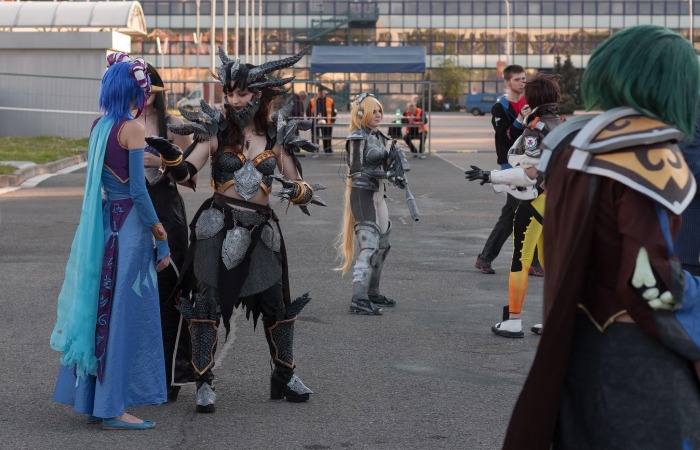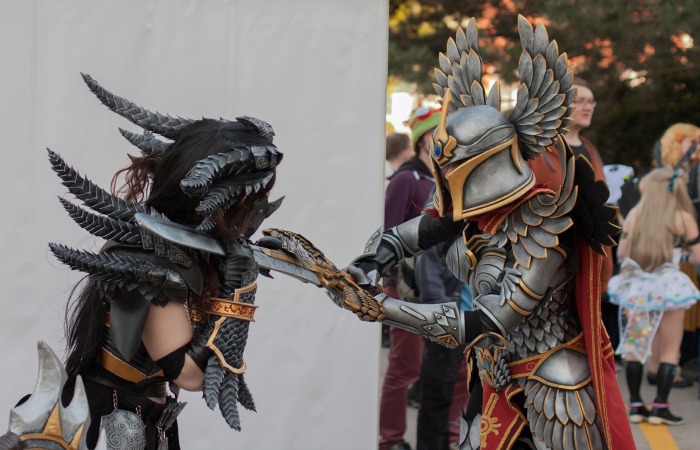Table of Contents
What is Dot World of Warcraft?
World of Warcraft players have seen every drastic change made to the game over the years. May it be a minor bug fix or an introduction of a new playable Class, veterans have seen it all. One thing that has remained the same since the beginning of the game is DoT. Many of you may know what it means and how it works. But for new players, it is ultimately an alien concept. That is why we are here to explain precisely what DoT or DOT means in World of Warcraft.
One of the most common terms players should be familiar with in World of Warcraft is “Dot,” sometimes called DoT. The term is crucial in any damage dealer’s dictionary, so be aware before stepping onto the battlefield.
World of Warcraft: What Does DoT Mean?

With almost 20 years on the market, World of Warcraft’s 12 playable classes has undergone several drastic changes. Each World of Warcraft expansion pack typically changes how each type plays, while some introduce new courses, like the death knight, monk, and demon hunter. However, throughout the history of World of Warcraft, one thing has always been present in almost every class: DoT.
Although the history of the DoT is more extended than that of World of Warcraft, the venerable MMORPG has a special relationship with them. As one of the longest-running RPGs, it introduced many game mechanics often found in the genre. DoTs even appeared in popular Onyxia’s Lair memes during Vanilla WoW. But for newer players, it can be challenging to understand what DoTs are and how they work.
What is DoT in World of Warcraft?

DoT is the abbreviation for damage over time. DoT effects are anything that deals Damage over some time rather than all at once (sometimes referred to as direct Damage or DD). World of Warcraft often refers to DoT as “periodic damage.” These abilities manifest as bleeding wounds, poisons, burns, or curses.
While typically referred to as periodic damage debuffs in World of Warcraft, standing in damaged areas, choking, or channeling multi-damage abilities can also be considered a DoT. Most DoT effects deal more harm than their direct damage equivalents but spread out over their duration.
How does DoT Work in the World of Warcraft?
Although they seem complicated at first glance, the effects of damage over time are easy to understand. Most player DoT effects deal damage roughly every three seconds by default. Increasing the haste value can cause these ticks to occur faster. Each tick of damage effects over time can be critical, just like their direct damage counterparts, and scales like other spells and abilities.
Damage over time affects when they can run for their maximum duration. Therefore, short encounters or weak enemies are wrong DoT targets, while powerful bosses and monsters are excellent. DoT-heavy classes are devastating in boss encounters with multiple powerful targets, as they can simultaneously hold their DoT on various bosses. Often referred to as “multipoint,” this strategy can provide a significant DPS boost in some World of Warcraft encounters.
Over the years, World of Warcraft.
World of Warcraft has made it easy to reapply DoT to what it used to be. Unfortunately, players could accidentally clip their DoT in the past, causing them to lose damage ticks, severely affecting their DPS. Thankfully, that’s no longer the case; Reapplied DoTs no longer reset the tick timer when applied but also benefit from the Pandemic effect.
This effect allows a DoT to use up to 30% of its remaining duration to increase the total duration of the DoT reapplied. This means players can reapply their DoTs with a low time without losing DPS. For example, if a DoT lasts 15 seconds, reapplying after the 5-second mark extends the duration by another 15 seconds without wasting time and stopping periodic damage.
DoT classes can also be overwhelming in World of Warcraft PvP. What these classes lack in explosive damage, they make up for in sustained damage. While applying all of their DoTs to a target takes some time, the damage ramps up quickly once they’re done, especially when combined with crowd control effects like fear.
However, DoT effects can be cleared with particular abilities, ending a DoT character’s offense. Healer classes can easily remove these debuffs, while many tanks and some DPS can alleviate some of them from time to time.
Which World of Warcraft Classes uses DoT?
Of all the classes in World of Warcraft, Affliction Warlocks and Shadow Priests are the most DoT-dependent. Affliction Warlocks in World of Warcraft use incapacitating Curses and Hexes like Agony, Corruption, and Unstable Affliction to drain enemies of their life force. In contrast, Shadow Priests use abilities like Vampiric Touch, Shadow Word: Pain, and Mind Flay to tear apart the enemy’s mind in pieces.
Though, Every Class in World of Warcraft has access to at least one DoT Effect:
- All death knights gain death and decay, but unholy knights also inflict disease and festering wounds on enemies.
- Demon Hunters use Immolation Aura to Damage nearby enemies periodically and can channel Eye Beam to destroy enemies.
- Balance Druids can burn enemies with Moonfire and Starfire, while Feral Druids can bleed them dry with abilities like Rend.
- Hunters have numerous skills that poison, bleed, or burn enemies in all their specializations and pets.
- While fire mages deal much direct damage, many of their spells cause low-damage burning effects like conflagration or leave fire areas on the ground like meteors.
- Monks have a few DoT options. However, most are channel AoE attacks like Rotating Crane Kick.
- Paladins have Consecration, damaging enemies in the affected area over time.
- All rogues inflict bleed effects with abilities like Garrote, but the Assassination specialization also focuses on Venomous Deadly Poison.
- Some Shaman abilities, like Flame Shock, cause burns, and totems like the Liquid Magma Totem could be considered a DoT.
- Warriors cause bleeding DoTs with Rend and Deep Injuries.
Damage over the Time in World of Warcraft
Damage over time effects have a brother: HoT or heal over time. These abilities are the opposite of DoT but otherwise function identically. Most healing specialists in World of Warcraft have entree to at least one. However, the Restoration Druid is the king of the HoT, closely followed by Discipline Priests and Restoration Shaman.
Hunters and Warlocks also have HoT for their pets, with the latter having a DoT/HoT cross in the form of Drain Life, which damages its target over time and heals itself.
It’s important to note that World of Warcraft: Dragon flight is building the aptitude tree system from the ground up, which means many of these abilities will change. Some can also remove, while new DoTs can introduced. Players will need to wait for Dragon flight to release more information on class talent trees to see how their favorite DoTs will be affected.
Conclusion
What is Dot World of Warcraft? In World of Warcraft, Dot stands for “Damage over Time,” so it can also written as DoT. This refers to abilities cast on an enemy that deals damage regularly over a short period. Each burst of injury is called a “tick.”
Each tick usually deals the same damage, but in some cases, the damage per tick increases. So your last tick can do twice as much damage as your first. You can also speed up ticks by building haste, which deals more damage, and if you make enough, more ticks to match the ability’s duration.
Point abilities also interrupt Crowd Control (‘CC’) abilities and tasks like crafting, healing, and fishing. However, they can often be dispelled or heal with items. So make sure you do this before you pull out your first aid kit after the fight.
That’s all you need to know about points or damage over time in World of Warcraft and how to maximize it when running DPS characters that rely on slow but deadly skills.
Also Read: What is 9mm in Inches – How to Convert 9mm (millimeters) to Inches


